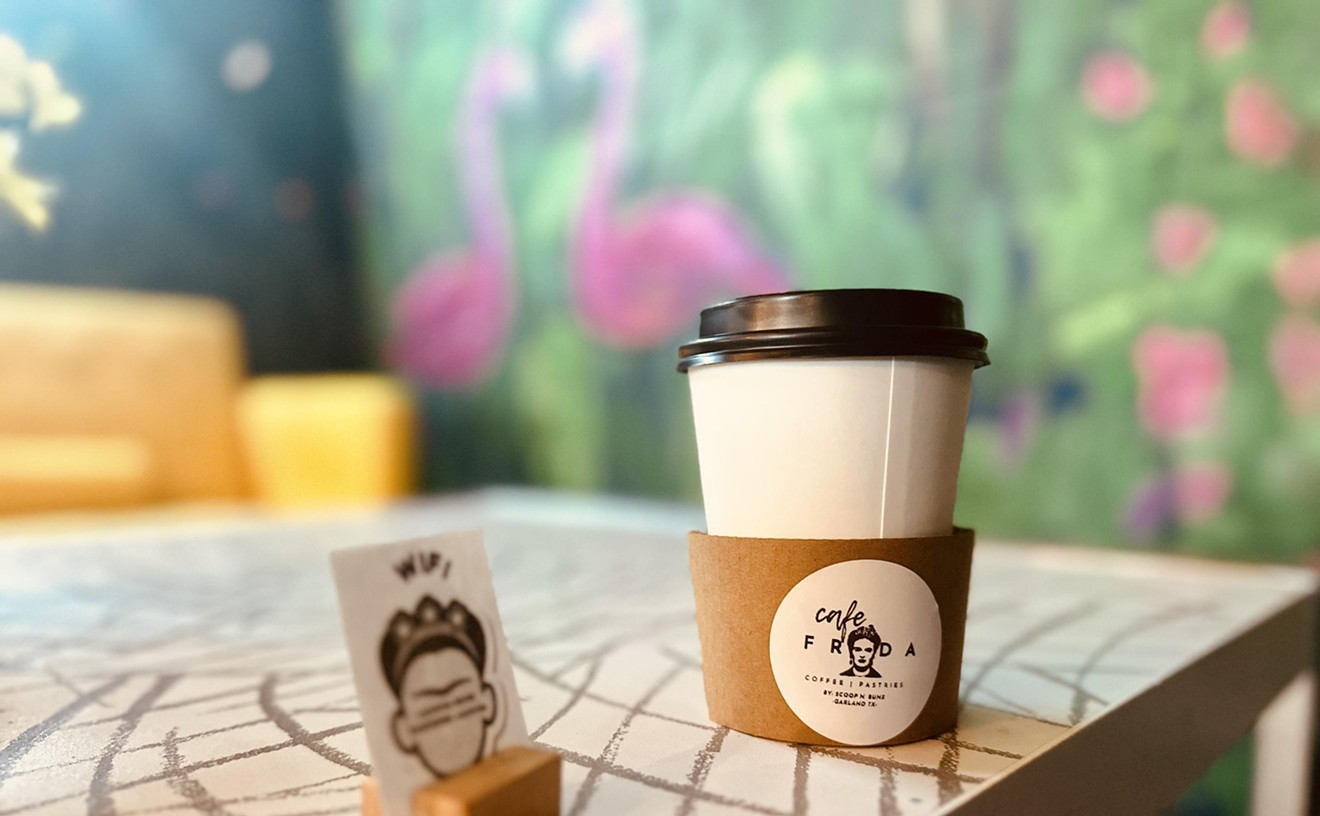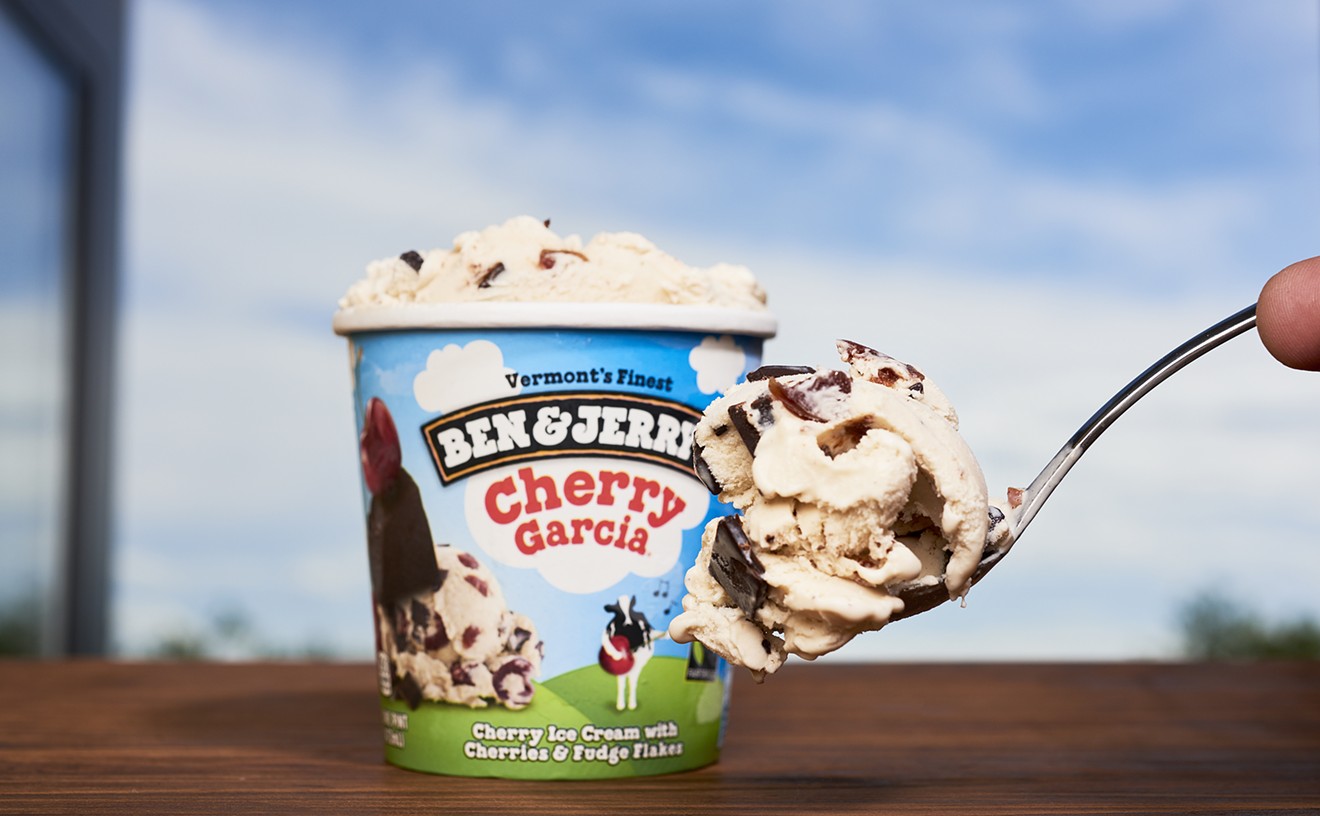This modest buffet is the only set piece on a stage framed by burners, ovens and grills. The square restaurant is designed to channel attention into this sanctum so kitchen performance is open to casual scrutiny as the crew stirs, rustles and shuffles between cooking surfaces and the buffet where plates are docked.
Originally cast in jet black, the buffet has been repainted green to match the sweeping "L" stroke in the Salum logo. It's topped with a slab of black marble. Shimmering gold caryatids--the ornamental female faces common in Greek architecture and 18th century furniture--form pilasters at the far edges.
It's where tragedy struck. Maybe it was a pot slapped down too fervently. Or maybe it was the smack of a utensil. Whatever the cause, the surface chipped. A hairline crack infected the stone. It spread with virulence, reaching for the edges. The slab cleaved, severing it into third and two-thirds sections.
"I couldn't sleep," says Abraham Salum, the restaurant's namesake. "I couldn't stop thinking about it." Such unfortunate drama has significance for this fledgling restaurant, being that the buffet is the hub, the prop that regulates kitchen presence.
And the spawn of that presence can be inspiring. Venison loin slices nudge a beautiful heap of crisp but tender vegetables: bright green broccoli, vivid haricot verts and crisp zucchini. It's as though the vegetation has been harvested into a photo-editing program with the color knob set to hyper-verdant. Have these vegetables mutated? Have they been treated with color stimulants?
No, they seem normal, save for a slight petrol undertone stemming (perhaps) from burner jets. The venison is requested medium rare; it militantly hugs rare while giving short shrift to the medium part. The center of the thicker loin slices are deep purple while the edges grow rosy before retreating to deep mauve and gray.
Busywork infests the meat. The loin is crusted in pistachios and salt and pepper while a glaze of apricots and sherry attempts futilely to cling to the edges. Yet it all holds together. The apricot bits, much larger than you might expect for a glaze, are firm (no fruit mush) and chewy with a marked tang. Yet they don't impede the crust, which foils any fruity sweetness (there isn't much) with a crisp, whispering pungency. This all rests on a firm bed of butter-sautéed spelt, the coarse, ancient cereal grain native to Southern Europe. This crude, chewy heap adds a nuttiness almost as pronounced as the real nuts on the meat edges. These proceedings would be clumsy if they didn't somehow fall into line, arranging their flavors into unity even as they totter on the edge of disarray.
Pity the sea bass couldn't escape it. Oh, it's striking: the bed of mashed potatoes, the pan-seared and oven-roasted sea bass fillet, the blushing smear of honey-balsamic vinegar tomato glaze, the dab of tapenade snuggling up to the side. And this: a pair of fennel bulbs stationed on the edge of the plate, their long stems perched vertically like a pair of antennae fastened to the head of an asparagus beetle. Instead of flaky, the fish is mushy, blending into the potato mash. The range of flavors--tangy, sharp, briny, sweet--barely assume coherence in this kludgey assemblage.
The same words couldn't be used to describe the restaurant itself. Salum is a thick serving of contemporary crispness; a soaking of beige with brown splatters (napkins), amber luminance and sparkles (votives plus the mirror band that straps the panels on the wall). The ceiling is a beveled series of recessions easing into a rectangular hole in the center. Strings of mother-of-pearl wafers dangle inside silk organza chandeliers.
On the bar, a row of martini glasses filled with ice awaits deployment. Saturday night nips must be dispensed via assembly line, lest the service staff get swamped just as the foie gras attempts to gain traction--which it doesn't. This is a peculiar dish. It's assembled in layers with mascarpone, diced ham and a butter biscuit. The ham, crudely chunked as if it had been pilfered from a chef's salad, is assembled near the bottom. Ham?
The biscuit is substantial, but that can't hide one persistent irk: the arrangement is gawky. Foie gras should be minimally pestered--a few greens here, a brood of berries in their own drool (stiffened with red wine, port, Madeira or even brandy) or a fanned Fuji apple sucker-punched with Calvados off to the side, kosher salt scattered over the freckled mauve lobe and perhaps an insignificant piece of grilled brioche. In this rendition, the flavors stumbled over one another. Also, foie gras should be warm. This lobe, flaccidly hugging the oversized butter biscuit, was stone cold.
Salum says he was trying to execute a play on a wintry, country dish. Perhaps the country part got the better of him. The progeny of Italian and Lebanese parents who was born and raised in Mexico City, Salum speaks four languages: Spanish, French, English and Portuguese. "I'm a mutt," he says. His portfolio includes a degree from the New England Culinary Institute in Montpelier, Vermont. Internships in Provence and Brussels followed. His inroad into restaurateuring follows his departure as chef/partner at Parigi on Oak Lawn Avenue.
The impressive element in this squared-off block of casual elegance is how it handles the shimmer of sunlight. The "L" in the logo seems greener. The light wood in the chairs and on the trim seems blonder. The bar is cleaner on account of all of those martini glasses being stabled. Salum is serving Sunday brunch. Instead of a disciplined column of glasses, the soft "pop" of champagne bottles rifles through the dining room. Mimosas are unleashed.
The food seems better too. Fried green tomatoes are as innovative as they are tasty. One slice is propped up against the other while a pair of candied pecans balances on their apex. Rémoulade runs down the crisp-battered vertical face like spilt paint. But these aren't slices. They're little green tomato sandwiches with crab meat pressed between the slices. They're greaseless. The marine sweetness effectively contrasts with the little burst of tomato pungency--an ingenious composite.
Not so with spinach, goat cheese and sun-dried tomato strata (a dish fashioned in layers) with scrambled eggs. Arriving in a small baking dish, the strata is overcooked, hard and dry. The components are welded together and are difficult to tine apart. Yet a side of hash browns, essentially a batch of diced potatoes perfectly browned and threaded with caramelized onion filaments, is delicious.
But perhaps this isn't surprising given this Salum jewel: gnocchi. Perfect beads of potato dumpling rest in a Parmesan cream lagoon snarled with spinach strips. Resting over this bumpy mesh is a grilled chicken breast scaloppine, striped deep with grill bar scorches and slapped with salt and pepper dashes. The breast is juicy, clean and reeking of savory flavor. Gnocchi is bull's-eye firm: not too mushy from overcooking, not too chewy from exuberant amounts of flour.
So we end up with this: a restaurant that is blindingly beige yet still reeks of charisma; a kitchen that produces food that is mostly good but is still open to a platoon of tweaks. That's fine though. The gold caryatids will officiate. 4152 Cole Ave., No. 103, 214-252-9604. Open for lunch 11:30 a.m.-3 p.m. Monday-Friday. Open for dinner 6 p.m.-10:30 p.m. Monday-Saturday. Open for brunch 10:30 a.m.-3 p.m. Sunday. $$$










